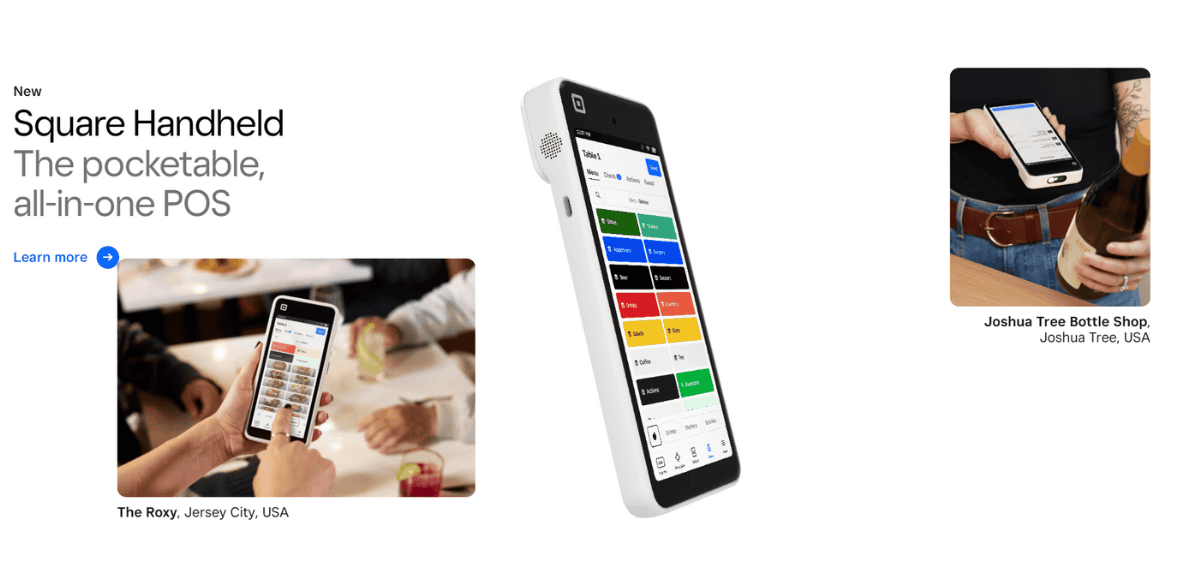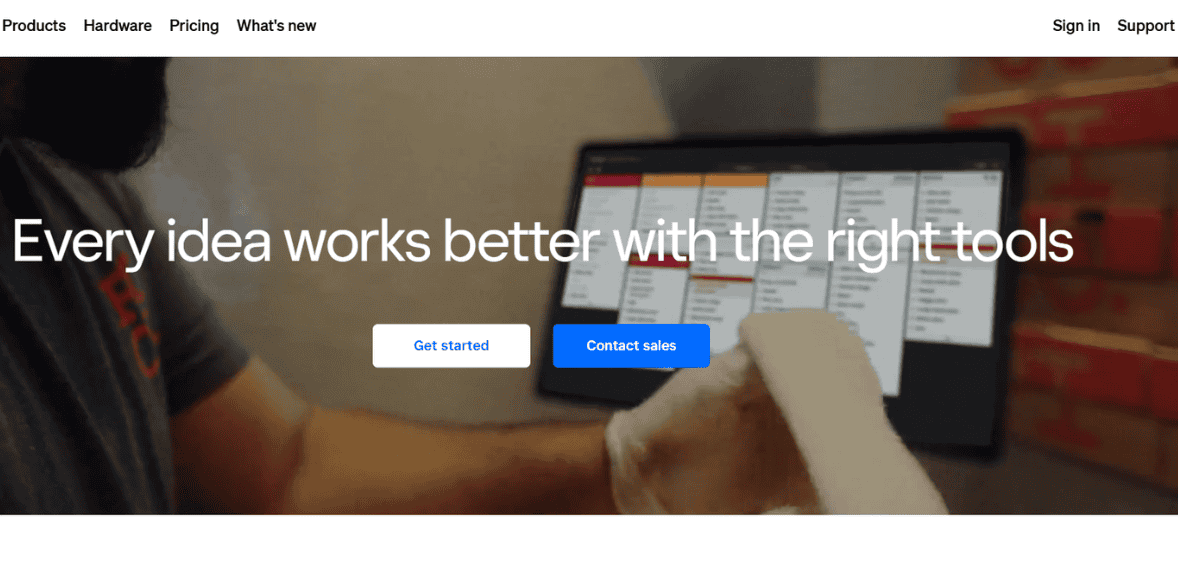Square Review

Square is a well-known name in the payment processing and POS industry, recognized for its straightforward approach to enabling businesses to accept card payments. Founded in 2009 by Jack Dorsey and Jim McKelvey, the company started with a simple card reader that plugged into a smartphone, aiming to make credit and debit card acceptance accessible to small merchants. Over the years, it has grown into a robust platform offering hardware, software, and financial tools that cater to both in-person and online transactions. Lets read more about Square Review.
Its product ecosystem now includes POS systems, mobile card readers, online store capabilities, invoicing tools, and even banking services tailored for small businesses. The core appeal lies in its simplicity; no long-term contracts, upfront pricing, and a relatively quick setup process. This has made Square a popular choice for startups, independent retailers, and service providers who value convenience.
Square has also evolved in response to market demands, introducing features like contactless payments, e-commerce integrations, and digital invoices. While it provides a competitive feature set, it’s worth noting that its flat-rate pricing model may not be cost-effective for very high-volume merchants. Additionally, its availability is limited to certain countries, which can be a drawback for businesses with international operations. Overall, Square’s combination of accessibility, user-friendly design, and integrated business tools has helped it stand out in a crowded payments market.
Getting Started with Square | Square Review
Setting up Square is easy so it’s perfect for business owners who want to start taking payments fast. Registration is online where you enter your business and banking details. Once verified you can order hardware like the Square Reader or Square Terminal or use the software tools right away if you want to take payments online.
The Square POS app can be downloaded to a smartphone or tablet and turns it into a full register. The initial setup is connecting the hardware (if used), linking a bank account for deposits and customising settings like tax rates, tipping options and receipt preferences. The platform is very user friendly so even if you have limited tech skills you can be up and running without much training.
For businesses that sell online, Square provides a free online store builder, as well as integrations with popular e-commerce platforms. Payment links and QR codes can be generated for remote transactions, offering flexibility for businesses without physical locations. It also provides clear guidance through online resources and tutorials, although some users may find live support limited during setup.
The absence of monthly fees or binding contracts means businesses can experiment with Square without committing financially upfront. However, merchants in industries considered high-risk may face account holds or restrictions, so it’s important to review Square’s terms of service before onboarding. Overall, the onboarding process is quick and accessible, aligning with the company’s goal of lowering barriers to payment acceptance.
Square POS System
The Square POS is at the heart of our offering, designed to handle transactions and business management. Available as a free app for iOS and Android, it works with Square’s own hardware or compatible third-party devices. You can process payments, manage inventory, track sales and generate reports all within the POS.
It’s versatile enough for any industry – retail, restaurants, service providers. Retailers can use it to scan barcodes, manage product catalogs and track stock levels in real time. Restaurants can use table mapping, order customization and kitchen display system integration. Service providers can schedule appointments, send invoices and accept payments on-site.
Customization is a big plus – you can adjust tax settings, enable or disable tipping and create custom receipts. The POS also syncs with the Square back-end dashboard so your data is available across devices. The core POS software is free but some industry specific features may require paid add-ons or subscriptions like advanced employee management tools or marketing features.
Performance is generally smooth, but the system does rely on a stable internet connection for optimal functionality. Offline mode is available, allowing businesses to accept card payments without immediate connectivity, but transactions are processed once the device reconnects. This makes the POS suitable for both fixed-location and mobile businesses. Overall, Square POS combines ease of use with flexibility, though some advanced features may require additional investment.

Payment Processing Capabilities
Square supports a broad range of payment methods, making it adaptable for modern consumer preferences. Merchants can accept major credit and debit cards, contactless payments like Apple Pay and Google Pay, and chip card transactions. Payments can be processed in person via card readers or terminals, online through Square’s checkout pages, or remotely using payment links and invoices.
The platform’s processing speed is competitive, with funds typically deposited into the merchant’s bank account within one to two business days. Instant transfer options are available for a small additional fee, allowing same-day access to funds. For businesses with consistent cash flow needs, this can be a significant advantage.
It operates on a flat-rate pricing model, charging a set percentage plus a fixed fee per transaction. While this simplifies cost calculations, high-volume businesses may find interchange-plus pricing from other providers more economical. One area of caution is Square’s risk assessment process; transactions deemed suspicious can result in temporary account holds, which may disrupt business operations.
It also provides built-in tools for refunds, partial payments, and tipping, as well as options to split payments across multiple methods. Recurring payments can be set up through the invoicing system, making it suitable for subscription-based businesses. Overall, Square’s payment processing capabilities are robust and flexible, though businesses should weigh the convenience of flat-rate pricing against potential cost implications at higher transaction volumes.
Square Hardware Options
It has hardware for all types of businesses and sizes. The simplest is the Square Reader, a tiny device that plugs into a smartphone or tablet to process chip and contactless payments. Perfect for mobile vendors, market stalls and service providers on the go.
For countertop setups the Square Stand turns an iPad into a full POS system, with a built in card reader and swivel display for customer interaction. The Square Terminal is a self contained device with a touchscreen, receipt printer and built in card reader, for businesses that need a portable but full payment solution. The Square Register is a full POS station with a customer facing display, for higher volume retail or hospitality environments.
All hardware integrates seamlessly with Square’s software, so transaction data syncs automatically. Hardware pricing is transparent, you can buy outright or through installment plans. Durability and design are generally good, but some users note that some devices need to be charged regularly or have limited peripheral compatibility compared to traditional POS systems.
Square’s hardware lineup provides flexibility for businesses to start small and upgrade as needed, making it a scalable choice. However, since the devices are proprietary, switching to another provider later may require investing in new hardware, which is worth considering for long-term planning.
Square for Online Businesses
Square has expanded its offerings to cater to online sellers, providing tools to manage e-commerce operations alongside in-person sales. Merchants can set up a free online store using Square’s website builder, which supports product listings, shopping carts, and secure checkout. The platform also integrates with popular e-commerce systems like WooCommerce, Wix, and BigCommerce, allowing sellers to use Square as their payment processor while retaining their preferred storefront design.
Online checkout options include customizable payment buttons, hosted checkout pages, and payment links that can be shared via email or social media. This flexibility makes it easy for small businesses to accept payments without a fully developed e-commerce site. Digital gift cards and customer loyalty programs can also be managed online, helping businesses build repeat sales.
Square’s online payment processing includes fraud detection measures and PCI compliance, ensuring transactions are secure. Shipping tools allow sellers to manage orders, print labels, and provide tracking information, while inventory management syncs across online and offline channels to prevent overselling.
One limitation is that advanced e-commerce features, such as abandoned cart recovery or advanced SEO tools, may require third-party integrations or a paid plan. Nonetheless, for small to mid-sized online businesses, It provides an accessible entry point into e-commerce with minimal setup complexity. It’s particularly well-suited for merchants who operate both online and offline, offering unified reporting and customer data across sales channels.
Square Invoicing and Recurring Payments
It offers a built-in invoicing feature that allows businesses to create, send, and manage invoices directly from the dashboard or mobile app. This functionality is beneficial for service-based businesses, freelancers, and contractors who often need to bill clients after work is completed. Invoices can be customized with branding, itemized charges, and payment terms, making them look professional while providing clarity to the customer.
Recurring payment support is a bonus. Businesses can set up automatic billing for subscriptions, memberships or ongoing services. This helps stabilize cash flow and reduces manual follow up as customers are charged automatically according to the schedule you set. Payment reminders and overdue alerts are included to minimize late payments.
Invoices can be sent via email or as a payment link and customers can pay with cards, ACH transfers or digital wallets. Once payment is received Square will update the transaction record automatically so your accounting and sales data is accurate. Invoicing is free to use but standard payment processing fees apply.
Limitations include fewer advanced automation options than dedicated invoicing platforms and some users may find the customization options basic. But for most small to medium sized businesses Square’s invoicing and recurring payment tools are a simple and integrated way to bill your clients without needing separate software.
Square’s Business Management Tools
Beyond payment processing, It has developed a suite of business management tools that help merchants streamline day-to-day operations. Inventory management is a core function, allowing businesses to add products, track stock levels, and receive low-stock alerts. Inventory updates sync across online and offline sales channels, helping prevent overselling.
Square also offers employee management tools, including time tracking, permission settings, and performance reporting. These are particularly useful for businesses with multiple staff members handling transactions. The system can track sales by employee, aiding in performance evaluation and commission tracking.
Analytics and reporting features give merchants insights into sales trends, best-selling products, peak business hours, and customer spending habits. Reports are accessible from both desktop and mobile, making it easy to monitor performance in real time. Marketing tools are also integrated, enabling businesses to send email campaigns, offer discounts, and run loyalty programs.
While many of these tools are included in the free POS software, certain advanced features require paid subscriptions. This includes deeper analytics, team management with advanced roles, and expanded marketing capabilities.
Businesses that need more specialized or industry-specific features may still prefer dedicated software, but Square’s integrated approach offers the convenience of having multiple tools in one ecosystem.
Square Banking and Financial Services
It has expanded into financial services with offerings such as Square Banking, Square Loans, and instant transfer options. Square Banking provides business checking and savings accounts with no monthly fees, and accounts are directly linked to the merchant’s Square sales for faster access to funds. Savings accounts offer interest, and balances can be earmarked for specific goals, like tax payments or equipment upgrades.
Square Loans is an alternative financing option for merchants, offering short term business loans that are repaid as a percentage of daily sales. This can be better for seasonal or fluctuating revenue streams but may be more expensive than a traditional bank loan. Loan offers are based on sales history in the Square system so newer merchants may not qualify immediately.
Instant transfer allows merchants to move funds from Square sales into their linked bank account in minutes for a small fee. This is great for businesses that need quick cash flow, like paying suppliers or payroll. While Square’s banking features are convenient and integrated, they are only available in select countries and some features may not be as full featured as a traditional bank. But for small businesses that want simplicity and speed these financial tools can be a nice add on to the payment platform.
Security and Compliance
Security is a critical aspect of any payment processing service, and Square incorporates multiple layers of protection to safeguard transactions and customer data. All payments processed through Square are encrypted from end to end, and the company maintains PCI DSS compliance, meaning merchants don’t have to handle their own PCI certification.
It also employs fraud detection systems that monitor transactions in real time to identify suspicious activity. When potential fraud is detected, transactions may be flagged or accounts temporarily frozen for review. While this is important for security, it can be disruptive for businesses if legitimate transactions are caught in the process.
Customer data is stored securely, and merchants have access to tools that allow them to manage refunds, disputes, and chargebacks within the dashboard. It also educates merchants about best practices, such as keeping devices updated and using secure networks for transactions. Overall, Square’s security approach balances ease of compliance for the merchant with active fraud prevention. However, businesses operating in high-risk industries should be aware that they may face more frequent holds or account reviews, which could affect cash flow.

Pricing and Fees
Square uses a flat-rate pricing model that is easy to understand. For most in-person transactions, the fee is a fixed percentage plus a per-transaction amount. Online transactions and keyed-in payments have slightly higher rates to account for greater fraud risk. There are no monthly fees for the core POS software, and hardware can be purchased outright or in installments.
The advantage of this model is transparency; merchants know exactly what they will pay per sale, without hidden charges or tiered rates. This is especially appealing for small businesses or those with fluctuating sales volumes. However, high-volume merchants may find that flat rates are more expensive compared to interchange-plus pricing from other processors.
Square does not charge setup fees, PCI compliance fees, or account maintenance costs, which further simplifies cost management. Additional services, like advanced team management, loyalty programs, or marketing campaigns, may carry subscription costs. It’s important for businesses to factor in the processing fees when setting prices or budgeting, particularly for low-margin goods. The simplicity of Square’s pricing is a major draw, but it’s not always the cheapest option for every merchant type.
Customer Support and Service Experience
Square provides multiple support channels, including a help center, community forums, email support, and phone support during business hours. The help center is well-organized, with articles, guides, and video tutorials covering setup, troubleshooting, and feature usage. Community forums allow merchants to share experiences and solutions.
Phone support is available but requires a customer code generated from the Square dashboard, which some users find inconvenient. Response times for email queries can vary, and while many customers report satisfactory resolutions, others note challenges when dealing with urgent account issues like payment holds.
It also offers live chat in certain regions, which can be more convenient for quick questions. Social media channels are active, and the company occasionally responds to queries there as well. Overall, Square’s customer support is functional and well-documented, but some merchants may prefer more direct, 24/7 assistance, particularly for businesses operating outside regular hours or with time-sensitive needs.
Pros and Cons of Square
Square’s main strengths include its ease of setup, user-friendly interface, and integrated ecosystem that combines payment processing with business management tools. The flat-rate pricing is simple to understand, and there are no long-term contracts or hidden fees. The range of hardware options makes it adaptable for different business models, and its e-commerce capabilities help merchants operate both online and offline.
On the downside, Square’s flat-rate fees can be costly for high-volume merchants, and account holds may occur if transactions are flagged for review. Availability is limited to specific countries, and some advanced features require paid add-ons. Hardware is proprietary, which can limit flexibility if switching providers later.
For many small to mid-sized businesses, these trade-offs are acceptable given the convenience and functionality Square offers. However, merchants with complex needs or very high transaction volumes may want to compare alternatives before committing.
Who Should Consider Square?
Square is good for small businesses, startups and mobile vendors who want simplicity, flexibility and integration. It’s perfect for independent retailers, restaurants, cafes, market stall operators, service providers and e-commerce sellers who want one platform for payments, inventory and basic business management.
Businesses with seasonal or variable sales will love the no monthly fees, while service based businesses can use invoicing and recurring payments. It is easy to use for entrepreneurs who don’t have dedicated IT staff. But high volume merchants or those who need industry specific features may find better options with providers who offer custom pricing or more advanced tools. International businesses should also check availability before choosing Square.
FAQs
Is Square suitable for high-volume businesses?
Square can handle high transaction volumes, but its flat-rate pricing may be more expensive compared to interchange-plus pricing models. Large merchants should calculate projected fees before deciding.
Does Square require a long-term contract?
No, Square operates without binding contracts, allowing merchants to start or stop services as needed without penalties.
Can Square be used internationally?
Square is available only in select countries. Merchants should verify availability and supported currencies before signing up, especially if they plan to sell internationally.





